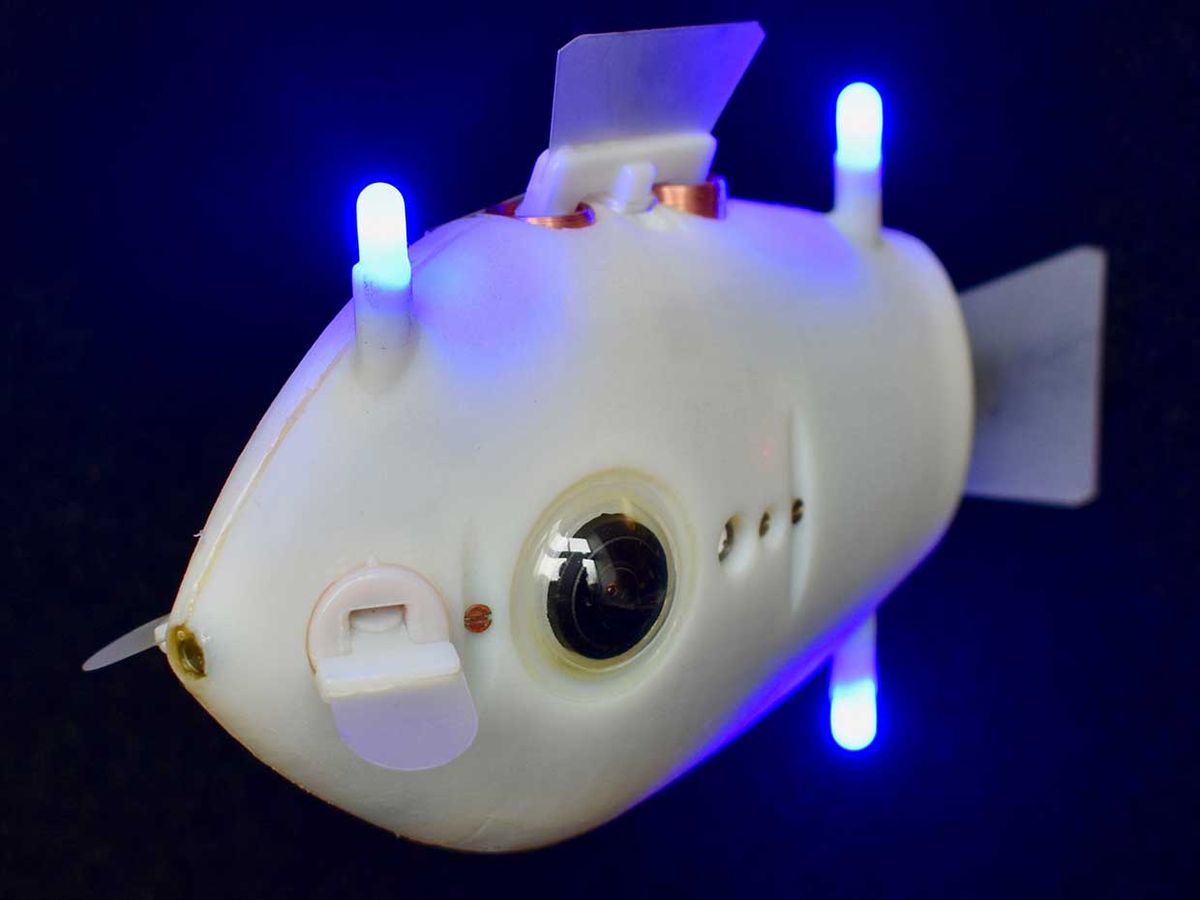Anyone who’s seen an undersea nature documentary has marveled at the complex choreography that schooling fish display, a darting, synchronized ballet with a cast of thousands.
Those instinctive movements have inspired researchers at the Harvard John A. Paulson School of Engineering and Applied Sciences (SEAS), and the Wyss Institute for Biologically Inspired Engineering. The results could improve the performance and dependability of not just underwater robots, but other vehicles that require decentralized locomotion and organization, such as self-driving cars and robotic space exploration.
The fish collective called Blueswarm was created by a team led by Radhika Nagpal, whose lab is a pioneer in self-organizing systems. The oddly adorable robots can sync their movements like biological fish, taking cues from their plastic-bodied neighbors with no external controls required. Nagpal told IEEE Spectrum that this marks a milestone, demonstrating complex 3D behaviors with implicit coordination in underwater robots.
“Insights from this research will help us develop future miniature underwater swarms that can perform environmental monitoring and search in visually-rich but fragile environments like coral reefs,” Nagpal said. “This research also paves a way to better understand fish schools, by synthetically recreating their behavior.”
The research is published in Science Robotics, with Florian Berlinger as first author. Berlinger said the “Bluedot” robots integrate a trio of blue LED lights, a lithium-polymer battery, a pair of cameras, a Raspberry Pi computer and four controllable fins within a 3D-printed hull. The fish-lens cameras detect LED’s of their fellow swimmers, and apply a custom algorithm to calculate distance, direction and heading.
Based on that simple production and detection of LED light, the team proved that Blueswarm could self-organize behaviors, including aggregation, dispersal and circle formation—basically, swimming in a clockwise synchronization. Researchers also simulated a successful search mission, an autonomous Finding Nemo. Using their dispersion algorithm, the robot school spread out until one could detect a red light in the tank. Its blue LEDs then flashed, triggering the aggregation algorithm to gather the school around it. Such a robot swarm might prove valuable in search-and-rescue missions at sea, covering miles of open water and reporting back to its mates.
“Each Bluebot implicitly reacts to its neighbors’ positions,” Berlinger said. The fish—RoboCod, perhaps?—also integrate a Wifi module to allow uploading new behaviors remotely. The lab’s previous efforts include a 1,000-strong army of “Kilobots,” and a robotic construction crew inspired by termites. Both projects operated in two-dimensional space. But a 3D environment like air or water posed a tougher challenge for sensing and movement.
In nature, Berlinger notes, there’s no scaly CEO to direct the school’s movements. Nor do fish communicate their intentions. Instead, so-called “implicit coordination” guides the school’s collective behavior, with individual members executing high-speed moves based on what they see their neighbors doing. That decentralized, autonomous organization has long fascinated scientists, including in robotics.
“In these situations, it really benefits you to have a highly autonomous robot swarm that is self-sufficient. By using implicit rules and 3D visual perception, we were able to create a system with a high degree of autonomy and flexibility underwater where things like GPS and WiFi are not accessible.”
Berlinger adds the research could one day translate to anything that requires decentralized robots, from self-driving cars and Amazon warehouse vehicles to exploration of faraway planets, where poor latency makes it impossible to transmit commands quickly. Today’s semi-autonomous cars face their own technical hurdles in reliably sensing and responding to their complex environments, including when foul weather obscures onboard sensors or road markers, or when they can’t fix position via GPS. An entire subset of autonomous-car research involves vehicle-to-vehicle (V2V) communications that could give cars a hive mind to guide individual or collective decisions— avoiding snarled traffic, driving safely in tight convoys, or taking group evasive action during a crash that’s beyond their sensory range.
“Once we have millions of cars on the road, there can’t be one computer orchestrating all the traffic, making decisions that work for all the cars,” Berlinger said.
The miniature robots could also work long hours in places that are inaccessible to humans and divers, or even large tethered robots. Nagpal said the synthetic swimmers could monitor and collect data on reefs or underwater infrastructure 24/7, and work into tiny places without disturbing fragile equipment or ecosystems.
“If we could be as good as fish in that environment, we could collect information and be non-invasive, in cluttered environments where everything is an obstacle,” Nagpal said.
Lawrence Ulrich is an award-winning auto writer and former chief auto critic at The New York Times and The Detroit Free Press.



